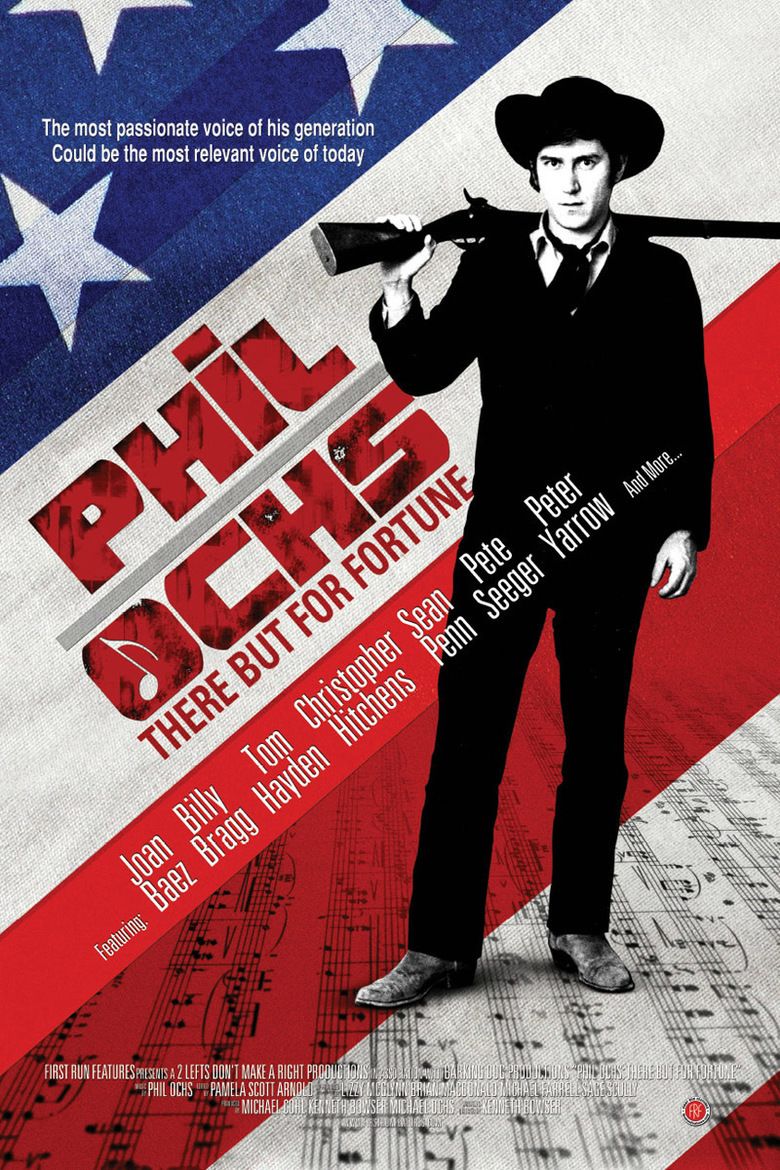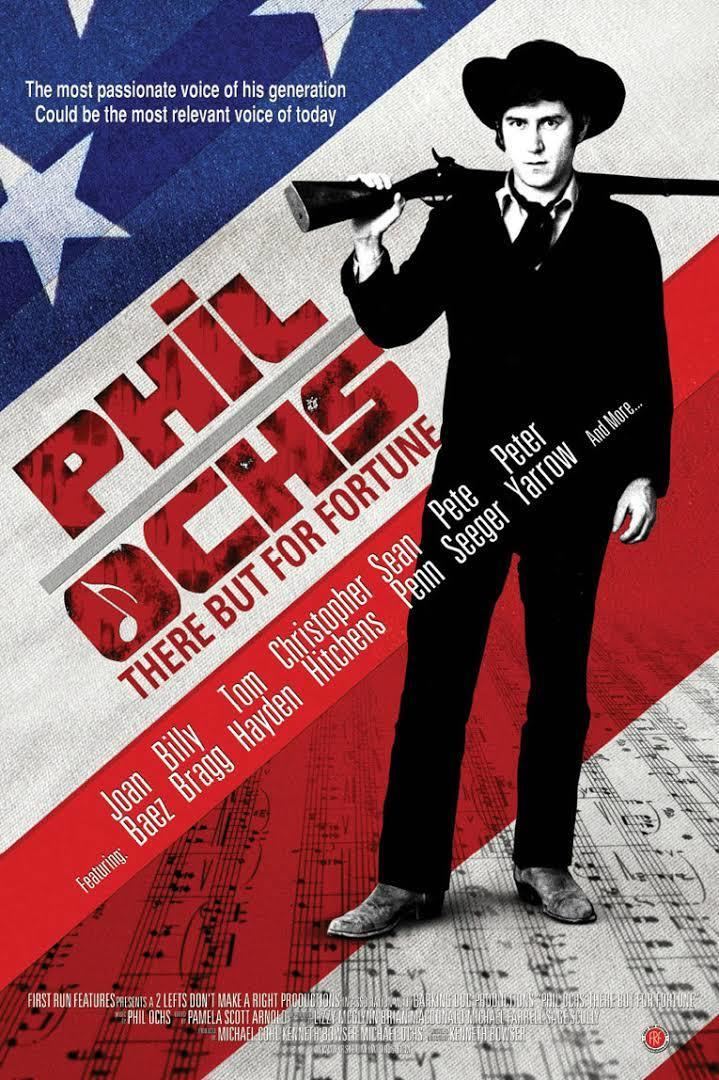Phil Ochs: There but for Fortune
7.8 /10 1 Votes
Director Kenneth Bowser Initial DVD release July 19, 2011 Duration Country United States | 7.6/10 IMDb Genre Documentary, Biography, History Writer Kenneth Bowser Language English | |||||||||||||||||||||||||||||||||
 | ||||||||||||||||||||||||||||||||||
Cast Similar movies Pete Seeger: The Power of Song (2007) | ||||||||||||||||||||||||||||||||||
Phil Ochs: There but for Fortune is a documentary film on the life and times of folk singer-songwriter Phil Ochs. The film, released theatrically in January 2011, was written and directed by Kenneth Bowser. Its title is taken from one of Ochs' best known songs, "There but for Fortune" (1963).
Contents
- June 23 2011 phil ochs there but for fortune documentary discussion
- Personal biography and political history
- Cast
- Music
- References

The film features extensive archival footage of Ochs, as well as scenes reflecting the turbulent political climate of the 1960s during which he emerged as a spokesperson on causes such as racial injustice, political oppression, the horrors of war, and labor issues. In addition, it includes interviews with family members and many of the artists and activists who knew him from his arrival in Greenwich Village in the early 1960s through his death in 1976. Also featured are comments from contemporary figures on Ochs' influence. This documentary was broadcast on January 23, 2012 on the PBS series American Masters.

June 23 2011 phil ochs there but for fortune documentary discussion
Personal biography and political history
The film is a biography of Ochs as well as a history of the anti-war movement, the folk song revival in the United States, and left-wing political activism during the 1960s. Tracking Ochs' rise to fame during the folk and protest song movements of the period, the film depicts his growing involvement in the radical politics that developed over the decade. Throughout, he wrote hundreds of songs, many of them ripped straight from the daily news. As the film's interviews bring out, Ochs firmly believed his music could change the world for the better.
Besides the archival footage of Ochs and the interviews with others involved in the folk movement, the film features extensive news clips of the events of the times, including the Civil Rights struggle in the South, assassination of President John F. Kennedy, rallies protesting US military involvement in Vietnam, assassinations of Rev. Martin Luther King, Jr. and Bobby Kennedy, shootings of students at Kent State, and the "police riot" at the 1968 Democratic National Convention in Chicago. Ochs became a part of the inner circle that sought to defeat US policies, and the film shows interviews with some of the movement's central figures, several of whom were close friends with Ochs, including Abbie Hoffman and Jerry Rubin, co-founders of the Youth International Party, and Tom Hayden, who went on to become a California State Senator.
As the film recounts, Ochs first became interested in politics and folk music while attending college at Ohio State University. He eventually dropped out of school and moved to Greenwich Village in 1962. His goal was to become the folk movement's leading songwriter. Unfortunately, Bob Dylan was already on his way to claiming that title, and Ochs had to settle for second best, at least in that regard. One of the film's subjects is the contrast between the two. Dylan, less concerned with politics than his music, abandoned topical songs early on. Ochs, on the other hand, held by his commitment to the era's causes, which made him, in Kenneth Bowser's view, probably the most important protest singer of the 1960s.
According to interviews with those close to Ochs, the political struggles weighed heavily on the folk singer, who took much of it personally. After the events in Chicago, he felt that America had lost its way. Suffering from bipolar disorder, Ochs subsequently became depressed and slid into alcoholism. He committed suicide at his sister's home in 1976.
Cast
In addition to archival footage of Ochs, the film features interviews with his younger brother Michael, a producer of the film and the singer's manager starting in the mid sixties; his older sister, Sonny; his wife, Alice Skinner; and his daughter, Meegan Lee Ochs. It also includes interviews with many of the figures who were connected with Ochs through music and politics, including:
Among the contemporary figures influenced by Ochs who are featured in the film are singer-songwriter Billy Bragg, singer Jello Biafra, and actor Sean Penn. Literary critic Christopher Hitchens provides commentary on Ochs' career.
Music
The film features parts of about three dozen songs that Ochs had written over the span of his career, from "Draft Dodger Rag" and "I Ain't Marching Anymore" to "Outside of a Small Circle of Friends" and "One Way Ticket Home". It also includes a cover of his song "Love Me, I'm a Liberal" by Jello Biafra and Mojo Nixon. Songs by other artists include Dave Van Ronk's recording of the traditional "He Was a Friend of Mine", Bob Dylan's recording of his song "Blowin' in the Wind", and Chilean activist and singer-songwriter Víctor Jara's recording of his song "El Cigarrito".
References
Phil Ochs: There but for Fortune WikipediaPhil Ochs: There but for Fortune IMDb Phil Ochs: There but for Fortune themoviedb.org
